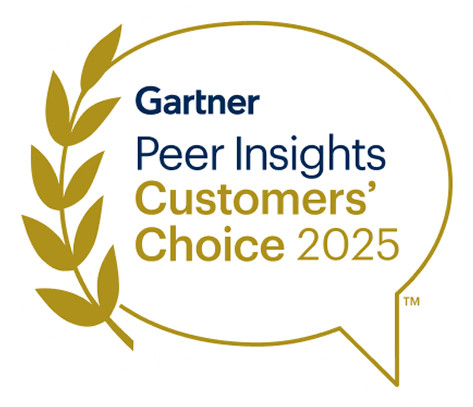It's Time to Embrace Cloud DLP and DSPM
What’s the best way to prevent data exfiltration or exposure? In years past, the clear answer was often data loss prevention (DLP) tools. But today, the answer isn’t so clear — especially in light of the data democratization trend and for those who have adopted multi-cloud or cloud-first strategies.
Data loss prevention (DLP) emerged in the early 2000s as a way to secure web traffic, which wasn’t encrypted at the time. Without encryption, anyone could tap into data in transit, creating risk for any data that left the safety of on-premise storage. As Cyber Security Review describes, “The main approach for DLP here was to ensure that any sensitive data or intellectual property never saw the outside web. The main techniques included (1) blocking any actions that copy or move data to unauthorized devices and (2) monitoring network traffic with basic keyword matching.”
Although DLP has evolved for securing endpoints, email and more, its core functionality has remained the same: gatekeeping data within a set perimeter. But, this approach simply doesn’t perform well in cloud environments, as the cloud doesn’t have a clear perimeter. Instead, today’s multi-cloud environment includes constantly changing data stores, infrastructure-as-a-service (IaaS), platform-as-a-service (PaaS) and more.
And thanks to data democratization, people across an organization can access all of these areas and move, change, or copy data within seconds. Cloud applications do so as well—even faster.
Traditional DLP tools weren’t built for cloud-native environments and can cause significant challenges for today’s organizations. Data security teams need a new approach, purpose-built for the realities of the cloud, digital transformation and today’s accelerated pace of innovation.
Why Traditional DLP Isn’t Ideal for the Cloud
Traditional DLPs are often unwieldy for the engineers who must work with the solution and ineffective for the leaders who want to see positive results and business continuity from the tool. There are a few reasons why this is the case:
1. Traditional DLP tools often trigger false alarms.
Traditional DLPs are prone to false positives. Because they are meant to detect any sensitive data that leaves a set perimeter, these solutions tend to flag normal cloud activities as security risks. For instance, traditional DLP is notorious for erroneously blocking apps and services in IaaS/PaaS environments. These “false positives” disrupt business continuity and innovation, which is frustrating for users who want to use valuable cloud data in their daily work. Not only do traditional DLPs block the wrong signals, but they also overlook the right ones, such as suspicious activities happening over cloud-based applications like Slack, Google Drive or generative AI/LLM apps. Plus, traditional DLP doesn’t follow data as users move, change or copy it, meaning it can easily miss shadow data.
2. Traditional DLP tools cause alert fatigue.
In addition, these tools lack detailed data context, meaning that they can’t triage alerts based on severity. Combine this factor with the high number of false positives, and teams end up with an overwhelming list of alerts that they must sort manually. This reality leads to alert fatigue and can cause teams to overlook legitimate security issues.
3. Traditional DLP tools rely on lots of manual intervention.
Traditional DLP deployment and maintenance take up lots of time and resources for a cloud-based or hybrid organization. For instance, teams must often install several legacy agents and proxies across the environment to make the solution work accurately. Plus, these legacy tools rely on clear-cut data patterns and keywords to uncover risk. These patterns are often hidden or nonexistent because they are often disguised or transformed in the data that exists in or moves to cloud environments. This means that teams must manually tune their DLP solution to align with what their sensitive cloud data actually looks like. In many cases, this manual intervention is very difficult—if not impossible—since many cloud pipelines rely on ETL data, which isn’t easy to manually alter or inspect.
Additionally, today’s organizations use vast amounts of unstructured data within cloud file shares such as Sharepoint. They must parse through tens or even hundreds of petabytes of this unstructured data, making it challenging to find hidden sensitive data. Traditional DLP solutions lack the technology that would make this process far easier, such as AI/ML analysis.
Cloud DLP: A Cloud-Native Approach to Data Loss Prevention
Because the cloud is so different from traditional, on-premise environments, today’s cloud-based and hybrid organizations need a new solution. This is where a cloud DLP solution comes into the picture. We are seeing lots of cloud DLP tools hit the market, including solutions that fall into two main categories:
SaaS DLP products that leverage APIs to provide access control. While these products help to protect from loss within some SaaS applications, they are limited in scope, only covering a small percentage of the cloud services that a typical cloud-native organization uses. These limitations mean that a SaaS DLP product can’t provide a truly comprehensive view of all cloud data or trace data lineage if it’s not based in the cloud.
IaaS + PaaS DLP products that focus on scanning and classifying data. Some of these tools are simply reporting tools that uncover data but don’t take action to remediate any issues. This still leaves extra manual work for security teams. Other IaaS + PaaS DLP offerings include automated remediation capabilities but can cause business interruptions if the automation occurs in the wrong situation.
To directly address the limitations inherent in traditional DLPs and avoid these pitfalls, next-generation cloud DLPs should include the following:
- Scalability in complex, multi-cloud environments
- Automated prioritization for detected risks based on rich data context
- Auto-detection and remediation capabilities that use deep context to correct configuration issues, creating efficiency without blocking everyday activities
- Integration and workflows that are compatible with your existing environments
- Straightforward, cloud-native agentless deployment without extensive tuning or maintenance
Further Enhancing Cloud DLP by Integrating DSPM & DDR
While Cloud Data Loss Prevention (DLP) helps to secure data in multi-cloud environments by preventing loss, DSPM and DDR capabilities can complete the picture. These technologies add contextual details, such as user behavior, risk scoring and real-time activity monitoring, to enhance the accuracy and actionability of data threat and loss mitigation. Data Security Posture Management (DSPM) enforces good data hygiene no matter where the data resides. It takes a proactive approach, significantly reducing data exposure by preventing employees from taking risky actions in the first place. Data Detection and Response (DDR) alerts teams to the early warning signs of a breach, including suspicious activities such as data access by an unknown IP address. By bringing together Cloud DLP, DSPM and DDR, your organization can establish holistic data protection with both proactive and reactive controls. There is already much overlap in these technologies. As the market evolves, it is likely they will continue to combine into holistic cloud-native data security platforms.
Sentra’s data security platform brings a cloud-native approach to DLP by automatically detecting and remediating data risks at scale. Built for complex multi-cloud and premise environments, Sentra empowers you with a unified platform to prioritize all of your most critical data risks in near real-time.
Request a demo to learn more about our cloud DLP, DSPM and DDR offerings.
<blogcta-big>









.webp)

.webp)

